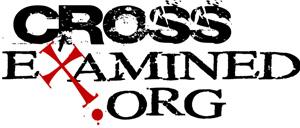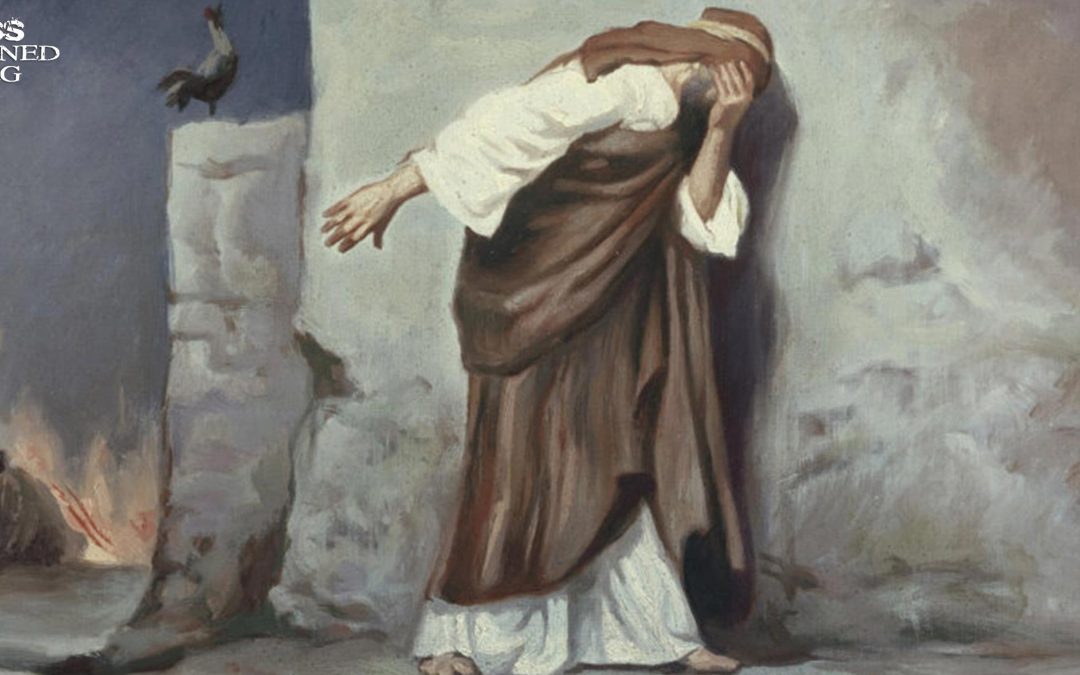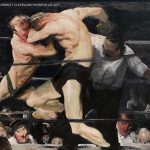We began an investigation into the historicity of the resurrection of Jesus of Nazareth. When investigating any claim of history, whether recent or of antiquity, historians use historiographical tools to decipher the probability of the event in question. The criterion of embarrassment is one of the tools used by historians to determine the legitimacy of the claims presented. The logic behind the criterion is that writers will attempt to make their cause look as attractive as possible. If the presented event contains details that are embarrassing to the writer, the earliest leaders, the founder, or the cause; then it could be said that the event is authentic. Craig Evans writes, “This criterion is easily misunderstood. All it means is that material that potentially would have created awkwardness or embarrassment for the early church is not likely something that a Christian invented sometime after Easter. ‘Embarrassing’ sayings and actions are those that are known to reach back to the ministry of Jesus, and therefore, like it or not, they cannot be deleted from the Jesus data bank” (Evans 2006, 49). When it comes to the resurrection of Jesus, numerous embarrassing details are discovered. Ten such embarrassing details will be presented in this article.

1. Women were the first eyewitnesses (John 20:11-18).
Seeing that this topic was the focus of the last article, not much will be said. For those who have not read the article, see the first part of this series. As a recap, the testimony of women did not hold the bearing that the testimony of men in the first century. Thus, if one is inventing a story, women would certainly not be used as the first witnesses. Yet all four Gospels note that it was the women, particularly Mary Magdalene, who first witnessed the risen Jesus. For this reason, the testimony of women serves as an embarrassing detail that speaks to the authenticity of the resurrection event.
2. The cowardice of the first disciples (Mark 15:40-41).
The women watched the crucifixion of Jesus from afar. They attended to the needs of Jesus up until the very end. However, the male disciples were nowhere to be found with the sole exception of John of Zebedee who was instructed to care for Mary, the mother of Jesus (John 19:26-27). Peter and the men ran and hid while it was the women who were brave and remained steadfast to Jesus. In the first century where male bravery was held in high esteem, it is unthinkable that this aspect of the Easter story would have been told unless it were, in fact, true.
3. The inability of the disciples to give Jesus a proper burial (John 19:38-42).
Proper burials were important to ancient Jews. Milton Fisher notes that “a society’s burial customs are a reflection of its spiritual views about death and the afterlife” (Fisher, 386). Failing to give a beloved person a proper burial negatively portrayed the value that the person/people placed on the dearly departed. It was Joseph of Arimathea, one of the members of the Sanhedrin, who gave Jesus a proper burial. A member of the very same Sanhedrin gave Jesus the burial that the disciples could not afford. This is incredibly embarrassing especially in an honor/shame culture found in the Middle East and Asian nations.
4. Doubt of the first eyewitnesses (Matt. 28:16-17).
After Jesus’s resurrection, the Evangelists (the Gospel writers) are honest about the doubts that some disciples hold. In the Gospel of John, Thomas is singled out and identified as one of those who doubted (John 20:24-25). Thomas is often ascribed with the title “Doubting Thomas.” This is unfortunate as Thomas demonstrated his faith by most likely giving his life. Good traditions suggest that Thomas was martyred for his faith by being speared in Mylapore, India on July 2, 72 AD. Even still, the Evangelists would not have reported the first witnesses’ doubt if it had not occurred.
5. The crucifixion is considered a curse (Deut. 21:23).
If a Jewish group was going to invent a movement, the last thing they would do is have their hero die on a cross. The book of Deuteronomy holds that any person who is hung from a tree is cursed (Deut. 21:23). An invented hero of Judaism crucified on a tree would not have been viewed as an admirable man, much less for one claimed to be the Messiah. For this reason, even the skeptical John Dominic Crossan states, “That he was crucified is as sure as anything historical can ever be” (Crossan, 145).
6. Ignorance of the first disciples of the Scriptures (Luke 24:45-49).
If the age of social media has shown anything, it is that people do not like to be wrong. Furthermore, if they are wrong, they will most likely not broadcast that fact. However, the Evangelists often describe their need for Jesus to explain the Scriptures to them to explain why the things occurred as they did. The disciples anticipated a military hero like Judas Maccabeus. What they received was far from what was expected—he was even better!
7. James did not believe in Jesus during his earthly ministry (John 7:5).
Serving as one of Gary Habermas’s six minimal facts, James was radically transformed by the resurrection event. James, Jesus’s half-brother, served as the first pastor of the Jerusalem Church and was a notable figure in Judea. However, this early Christian leader was not originally a disciple of Jesus. John records that none of Jesus’s brothers and sisters believed in him during his earthly ministry (John 7:5). Furthermore, his family thought that Jesus was “out of his mind” (Mark 3:21) at one juncture. This is not something that a person would record unless it is grounded in some historical truth.
8. The Jewish leaders invented the story of the disciples stealing the body (Matt. 28:11-15).
The Gospel of Matthew records the fabrication of a story by the Jewish leadership. When the guards reported the events to the Jewish leaders, they told the guards to tell everyone that the disciples stole the body of Jesus. This is tremendously problematic. The Roman guards would have been executed if they had fallen asleep or permitted the disciples to steal Jesus’s body. Furthermore, there is little chance that the disciples could have overtaken a fully armed Roman guard which may have consisted of as many as sixteen soldiers. The recording of the story itself illustrates an embarrassing detail that finds merit in history.
9. Jesus’s anxiety in the Garden of Gethsemane (Luke 22:42-44).
Jesus was not presented as a hero heading to the cross with no fear or anxiety. Rather, the picture portrayed by the Evangelists is quite different. Jesus was extremely brave going to the cross as he did. Evidence from the geographical layout suggests that Jesus could have easily escaped the Garden of Gethsemane through the shroud of the night. He would have seen the soldiers coming from Jerusalem at a distance. Even still, the Evangelists report that Jesus was so anxious that he sweated great drops of blood (Luke 22:42-44). Hematidrosis is a rare medical condition in which the capillary blood vessels that feed the sweat glands burst under extreme fear and stress. Luke notes that the angels of the Lord came to minister to him before heading to trial. This would not have been recorded unless true as this story counters the hero legends of the day.
10. Peter’s denial of Jesus (Luke 22:54-62).
All three Synoptic Gospels record the betrayal of Simon Peter. Simon Peter was considered to be the first major leader of the Christian church after Jesus ascended to heaven. Nevertheless, the one and same Peter is shown to have denied that he even knew Jesus three times in the courtyard outside of where Jesus was tried. This is extremely embarrassing and would not have been documented unless it was grounded in historical truth.
Conclusion
The ten embarrassing details presented here only scratches the surface of what could be mentioned. Nonetheless, the Evangelists’ willingness to document stories that cast the earliest disciples, and sometimes even Jesus himself, in a bad light illustrates the value they placed on recording the biographies of Jesus accurately. Additionally, the resurrection of Jesus is not based on legendary and mythical data. Rather, it is grounded in historical facts, at least what the early disciples and Evangelists believed to be true.
Sources
Crossan, John Dominic. Jesus: A Revolutionary Biography. San Francisco, CA: HarperCollins, 1991.
Evans, Craig A. Fabricating Jesus: How Modern Scholars Distort the Gospels. Downers Grove: IVP, 2006.
Fisher, Milton C. “Burial, Burial Customs.” Baker Encyclopedia of the Bible. Grand Rapids, MI: Baker Book House, 1988.
Recommended resources related to the topic:
Early Evidence for the Resurrection by Dr. Gary Habermas (DVD), (Mp3) and (Mp4)
Cold Case Resurrection Set by J. Warner Wallace (books)
Jesus, You and the Essentials of Christianity – Episode 14 Video DOWNLOAD by Frank Turek (DVD)
The Footsteps of the Apostle Paul (mp4 Download), (DVD) by Dr. Frank Turek
__________________________________________________________________________________________________________________________________________________
Brian G. Chilton is the founder of BellatorChristi.com, the host of The Bellator Christi Podcast, and the author of the Layman’s Manual on Christian Apologetics. Brian is a Ph.D. Candidate of the Theology and Apologetics program at Liberty University. He received his Master of Divinity in Theology from Liberty University (with high distinction); his Bachelor of Science in Religious Studies and Philosophy from Gardner-Webb University (with honors); and received certification in Christian Apologetics from Biola University. Brian is enrolled in the Ph.D. program in Theology and Apologetics at Liberty University and is a member of the Evangelical Theological Society and the Evangelical Philosophical Society. Brian has served in pastoral ministry for nearly 20 years. He currently serves as a clinical chaplain.
Original Blog Source: https://cutt.ly/ccGPRKO


















Facebook Comments